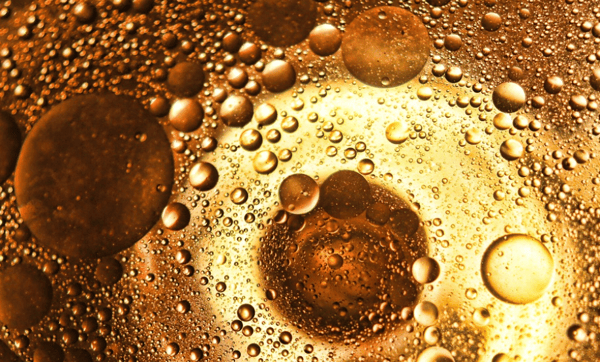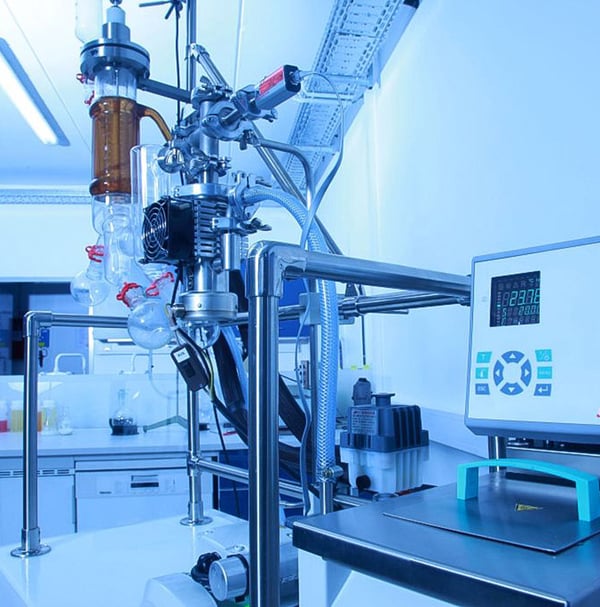During biodiesel distillation operations, many factors have to be taken into account to ensure the quality of the biodiesel produced. The type and quality of the raw material play a decisive role. You will find out what challenges are associated with this in a brief overview.
1. High sulfur content in biodiesel
For biodiesel production (fatty acid methyl ester = FAME), vegetable oils and waste products such as tall oil, used cooking oils, split fatty acids, or animal fats are used. A significant disadvantage of the waste products, in particular, is their high sulfur content:
- FAME from vegetable raw materials only contain 2 to 7 mg/kg sulfur content.
- Animal fats and used cooking fats contain 30 mg/kg sulfur.
- Food waste, in particular, sometimes has a high input of sulfur, since foods such as eggs, dairy products or poultry carcasses contain a lot of sulfur.
Biodiesel generally has to be improved by distillation
In order to achieve the desired quality of the biodiesel, final purification of the methyl ester, using vacuum distillation is necessary if feedstocks of unfavorable raw material quality are applied. The undistilled biodiesel is evaporated and freed from the high-boiling impurities, and achieves a significant reduction in sulfur content, which is in compliance with EN14214 requirements.
Adaptation of distillation conditions required
Higher sulfur contents also make it necessary to adapt the biodiesel distillation by varying the distillation conditions individually. Highly volatile sulfur compounds (mercaptans) could quickly push the vacuum system to its limits if not properly accounted for in the suction flow. Consequently, depending on the sulfur content, the biodiesel distillation must be run with a lower load or a higher residue rate, resulting in a correspondingly lower throughput and yield.

Reducing the sulfur content in biodiesel requires distillation purification in a vacuum and the constant adjustment of the distillation conditions.
2.Various composition and quality of raw materials.
One of the biggest challenges in biodiesel distillation is the uncertain standardization depending on the lipid source. Since the composition of the basic materials provided varies, there are sometimes considerable differences in quality, compared to separately collected used cooking oils, used cooking fats and oils from grease separators, for example, which are significantly poorer in quality. In most cases, the characteristics of "the same products" from various origins are quite different.
The plant operator must take the raw material composition into account during operation and compensate for it by constantly adjusting the plant parameters. For many products, it is also necessary to determine the optimum operating parameters for the evaporation process using a series of tests.
A key factor for the design of evaporators in the context of biodiesel distillation, for example, is the viscosity of the processed materials. The more viscous the product, the lower the feed rate, i.e. the throughput.
The reason is the long residence time for the product to be converted to a lower viscosity state. Which is done by preheating in the evaporator or suitable heat exchangers using waste heat recovery before starting the evaporation process.
3. The higher complexity of biodiesel distillation plants
In some cases, the composition of the feedstocks makes it necessary to design the biodiesel plant as a whole in a more complex way and to connect several evaporators in series. In particular, low-quality raw materials and multicomponent mixtures such as tall oil, place high demands on the plant's design.
For example, the first separation stage, when the viscosity is still very low, a falling film evaporator could be used to separate aqueous substances. When the mixture reaches a higher density or evaporation is no longer feasible due to temperature sensitivity or other factors, the wiped surfaces of the thin film or short-path evaporator are used, in the second stage.
The number of separation apparatuses required in the overall plant should be optimally established by comprehensive test series. In our in-house technical competence center, we cover the entire range of our supplied evaporation and distillation technology and determine the optimum plant configuration through many apparatuses. A wide variety of processes and procedures can be simulated and optimized there in order to develop the best possible solution for biodiesel distillation within the given conditions.

Biodiesel distillation processes and raw materials can be tested extensively in the in-house technical center © GIG Karasek
Customer-specific tests in the technical competence center
The GIG Karasek's technical competence center conducts all test processes supervised by specialists. Before the trials begin, detailed planning is carried out in cooperation with the customer, after which the process is represented in a laboratory or pilot scale. The data required for scale-up is determined in the process. With the methods developed through many years of experience, operations can be performed that exceed the scale-up factor 2000.
Furthermore, we offer customers, interested parties, and business partners the opportunity to carry out trials with their product material. Here, operators of existing plants have the opportunity to conduct comprehensive tests on new raw materials in a cost-effective laboratory and pilot trial environment, instead of testing them on their expensive large-scale plant.
After completing the test series, the customer normally receives 30 to 40 samples for further analysis, including the pilot plant report with all relevant test data (temperature, pressure, throughput, energy consumption). Based on the test protocols, the plant operator has a solid foundation for the optimum setting of the evaporator for the respective raw materials.
Conclusion: Individual solutions for biodiesel distillation
Raw material-specific challenges in context of setting up and operating a biodiesel distillation plant vary from company to company. Consequently, standard applications are not feasible. Depending on the type and quality of the raw material, different processes are used which are optimally aligned to the needs of the plant operator. The extensive test infrastructure of the GIG Karasek technical competence center provides the decisive basis for developing individual apparatuses or complete plants as well as the optimization of operational data of existing distillation plants.




